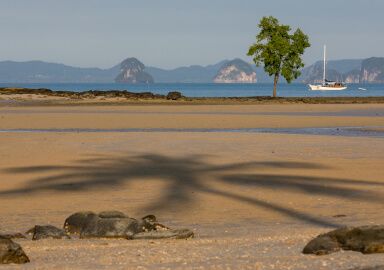Arapaima
A native of the Amazon, able to breeze air and make sudden leaps high out of the water, the arapaima is one of the biggest and most exotic freshwater fish species.
View 2 listings
2
listings
–
price starting from
1
countries
–
to the nearest trip
Where and When?
The current known natural distribution of arapaima is the Amazon basin of Brazil, but it is thought that this shrank due to overfishing. Within this area they favour backwaters and lakes, as well as deep, slow flowing parts of rivers. They have been introduced to parts of the Far East, including Thailand, and have established small populations in several areas. They are also “farmed” in various parts of the world for food or sport fishing and are regarded as sensitive, quiet fish. Most feeding is carried out after dark but, as it is often difficult to access their areas at night, fishing is usually done early in the morning or late in the afternoon.
Most of the region in which arapaima are present is impacted greatly by annual flooding regimes and so local knowledge is essential to be at the right areas at the correct time of year. Arapaima can travel great distances and are completely absent from some “good” areas for extensive periods. Arguably the best destination for arapaima fishing, if you’re looking for guaranteed catch, are the Thai fishing resorts.
About Arapaima
Arapaima are a small, but complex and confused, group of fish of the Arapaima genus of which Arapaima gigas, also called pirarucu or paiche, is the largest and best known. They are robust, elongate fish with massive blackish-green, red edged scales in diagonal rows along the body and the whole posterior of larger fish can also become very reddish. They have very big, wide mouths at the front of, and below, the broad, shallow, head, but there are no biting teeth. The arapaima rise to the surface regularly to gulp in air, as their swim bladders are adapted to absorb oxygen, which helps them survive in stale, warm waters. They will occasionally leap out of the water for no apparent reason.
There are many stories of gigantic arapaima in the past - fish as long as 4.5 m. (15 ft.) - but, among the biggest confirmed fish, is one of 2.6 m. (8.5 ft.). Fish as heavy as 220 kg. (440 lbs.) have been reported but, currently, it is thought that the largest fish are around 100 kg. (220 lbs) and under two meter long. Large specimens are top predators, eating mostly fish, but also crustaceans, amphibians and small birds. They make depressions in the mud or sand where they deposit their eggs as the waters rise and, after they have hatched, the male will “brood” them in his mouth.
How to Catch?
There are effectively two ways to catch arapaima - neither of which is easy or cheap. In places in the Far East, particularly Thailand, there are destinations that advertise arapaima fishing. These are mostly fairly isolated lakes and ponds into which the species has been introduced. Fishing here can usually be tailored to the wishes of the angler. Catching arapaima in their natural habitat requires going to the Amazon and, usually, using local outfits and guides to get you safely and efficiently to where there are good fish. The tackle must be very strong and of good quality. Beyond that, it is important to have a local fisherman with knowledge of exactly where to find arapaima and how to get them to take bait.
Arapaima can usually be located by spotting them surfacing to gulp air, but care is essential whilst approaching the fish so as not to “spook” it. If fish have been found and approached carefully, they may be caught on bait, live or dead, artificial lures or even fly. The fish can become very large, and their mouths are very bony. This, combined with the fish often thrusting its head out of the water and thrashing it around to loosen a hook, result in the landing of a good arapaima as an often exhausting, exhilarating, but memorable experience.



